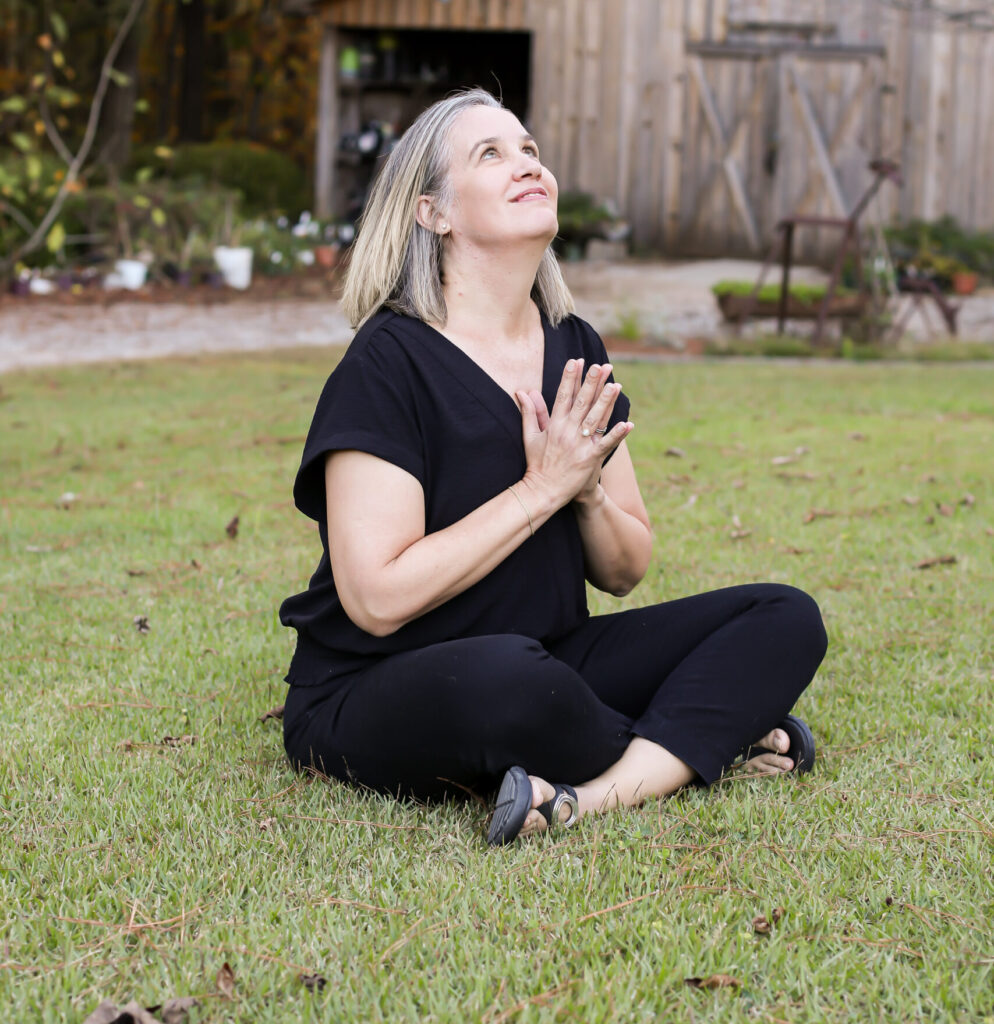
I’ve been drawn to meditation for most of my life. I started exploring it as a teenager after being diagnosed with an autoimmune disease, but for decades I struggled to be consistent. Then, something shifted for me three years ago, and I’ve now meditated for over 1,000 consecutive days.
In honor of three years of daily meditation, I’m sharing what helped me stay consistent—especially as a highly sensitive person and therapist who holds space for others. If you’ve struggled to make meditation a habit, you’re not alone. In this post I’ll share what worked for me and might help you too.
Why It’s Hard to Meditate Regularly
Most people know meditation is beneficial, but resistance often gets in the way. Some common thoughts that might stop you from meditating include:
- “I have too much to do; I can’t just sit still.”
- “It’s boring.”
- “I can’t quiet my mind.”
- “It’s physically uncomfortable.”
- “I’d rather do something else.”
Believe me, I’m familiar with all the resistance! The truth is, I don’t enjoy every meditation session. Sometimes I observe my racing mind almost the entire time. Meditation isn’t about achieving a perfectly still mind. It’s about building the ability to be present with whatever arises—whether that’s stillness or a racing mind. Understanding that struggle is part of the process can make it easier to return to the practice without judgment.
How to Build a Consistent Meditation Practice
1. Find Your “Why”
With all the resistance that comes up, it’s crucial to connect with your motivation. What makes you want to meditate? For me, my “why” includes:
- Being more present in my life and relationships.
- Strengthening my connection to my intuition and inner knowing.
- Showing up for my clients and loved ones with a grounded, calm presence.
- Deepening my spiritual connection.
When your practice is tied to personal values, it becomes easier to return to, even when it feels difficult. Click here to read more about the benefits of meditation for HSPs and therapists.
2. Start Small and Let It Count

One of the biggest barriers to consistency is thinking meditation has to be long or intense. I focus more on consistency than length. Some days, I only manage 5-10 minutes. Some people might say that doesn’t “count,” but I know myself — five minutes is better than nothing, and it keeps me from falling off completely. It is still practicing slowing down, tuning in, and having a moment of consciousness in the middle of a busy life.
On good days, I aim for 20–30 minutes because I know I benefit more from longer sessions. But I don’t beat myself up if I don’t meet that target every day. What matters is building the habit of showing up for yourself. Over time, your capacity will grow.
There’s no perfect way to do it. The goal is to create space for yourself, tune into your inner experience, and give yourself the gift of presence.
3. Use an Accountability System
I didn’t start out with a goal to meditate every day, even though having a regular meditation practice was a fantasy I’ve had since I was a teenager (I admit, I’m a total mindfulness and spiritual nerd). But accountability and my competitive side played a big role in helping me with consistency.
I used the free Insight Timer app to track my meditations, and after losing my consecutive day streak at 17 days, I got determined to see how long I could go. My goal became 30 days, then 100, then 200, then a year, something I NEVER thought I’d accomplish. I told myself I could take a break at 365 days— but I didn’t because I felt the value I get from my consistent practice, and I did not want to skip a day.
I knew I had made inner progress when a few weeks prior to the two year mark, I meditated without my phone nearby and forgot to track it in the app. My streak reset to day one. In the past this would have upset me. This time, I was able honor my disappointment without dwelling on it and restart my streak at day one. I knew the streak wasn’t what mattered—the practice itself was. I contribute my ease of acceptance to my daily practice.
You might not be competitive like me, but finding a source of accountability helps. You could use an app, meditate with a partner, or join a meditation group. My husband and I often meditate together, and that extra layer of support makes a difference.
4. Structure and Goals Without Rigidity

Having a general structure helps—like meditating first thing in the morning or before bed—but flexibility is key. Many times, I missed my morning routine and instead meditated in my car while waiting for my kids or while dinner was in the oven.
It’s easy to take an all-or-nothing approach, but meditation isn’t about rigid discipline. If daily meditation feels overwhelming or unattainable, start with 2–3 times a week for 5-10 minutes. Small, consistent steps matter more than perfection.
5. Choose a Style That Works for You
If you’re new to meditation, experiment with different styles to find what resonates with you. There’s no one right way to meditate. Some people prefer guided meditations, while others like silent mindfulness or breath awareness. Anything that moves your attention to your inner experience is helpful. You can explore:
- Mindfulness meditation
- Christian contemplative practices
- Buddhist meditation
- Yogic practices
- Chakra-based practices
- Body Scans
If you’re new to meditation, try a few styles and see what resonates. There are so many teachers and free resources online.
For me, seated silent meditation is my goal because it helps me stay focused and connected. But I still listen to guided meditations sometimes — I just don’t count them toward my streak because my goal is to create space for silently being with what my inner system needs rather than to follow someone else’s guidance.
6. Make It Comfortable and Inviting

You don’t have to sit cross-legged on the floor. I often meditate with pillows and back support or even outside listening to the birds. You could sit in a chair with your feet on the ground or walk mindfully. Some people create an altar or light a candle. Creating a comfortable, inviting space increases the chances you’ll actually show up. The goal is to create an environment that feels supportive — not stressful.
The Long-Term Benefits of a Daily Practice
The benefits of meditation are cumulative. Over time, you may notice:
- You handle stress more easily.
- You feel more emotionally balanced.
- Things roll off your back more quickly.
- You sense your intuition more clearly.
- You feel more spiritually connected.
The key isn’t perfection—it’s returning to yourself, again and again, with kindness and curiosity. Click here to read about more benefits of meditation for HSPs and therapists.
Ready to Take the Next Step?

If you’re a sensitive person or therapist wanting to deepen your self-awareness and healing, meditation and therapy together can be life-changing. Let’s explore how this can support your journey.
I offer online therapy anywhere in Georgia and in-person therapy in Carrollton, Georgia. Schedule a free consultation to take the next step toward deeper healing and self-awareness.